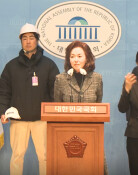Non-committal social distancing guidelines are introduced
Non-committal social distancing guidelines are introduced
Posted August. 21, 2021 07:27,
Updated August. 21, 2021 07:27
The South Korean government decided to extend the current social distancing guidelines – Level 4 for Seoul and nearby regions and Level 3 for other regions – for two weeks. With the new decision, the current social distancing levels will last for a total of eight weeks in Seoul and nearby regions and six weeks for other regions. Restaurants and cafes in the Level 4 regions will have to close one hour early at 9 p.m. from the previous guideline of 10 p.m. However, the government allows gatherings of up to four in restaurants and cafes, including two people who are fully vaccinated.
Experts have been proposing that stronger guidelines, including mandatory working from home, should be implemented even for a short term to quickly put the fourth wave of COVID-19 infection under control as the delta variant spreads. However, the government has been repeatedly extending the social distancing measures that nor not too effective to control the fourth wave. Meanwhile, the number of new daily cases recorded over 2,000 for two days in a row.
Reducing the business hours of restaurants and cafes while increasing the number of customers allowed inside are also inconsistent. The government explained that it was to keep the virus under control while giving some breathing room to small business owners and incentives for vaccination to people. From the perspective of citizens, however, it is confusing whether the new policies are to relax or strengthen the existing guidelines. Measures with complex messages are less efficient.
As social distancing guidelines have met limitations, the government will consider switching to the so-called “With COVID-19” system from late September or early October, which means focusing on the management of patients with severe symptoms and death tolls, rather than suppressing the number of new patients. What matters the most here is raising the vaccination rate. Even if South Korea’s vaccination rate reaches 50 percent or more in the first week of October according to the government’s prediction, it is a far lower figure than other countries with similar policies, such as Singapore with 73 percent and the U.K. with 61 percent.
As people’s exhaustion with the current disease control policies is growing, social distancing guidelines cannot be extended unlimitedly. However, changing the current system without proper preparation while the vaccination rate is still low can lead to a soaring number of new patients and the collapse of the medical system. The government should accelerate preparation efforts by ensuring a stable supply of vaccines to raise the country’s vaccination rate and vaccinating more people in high-risk groups, such as those with chronic diseases or in older ages. Careful preparation for the “With COVID-19” period without a lax attitude is what will bring freedom from COVID-19 sooner.







